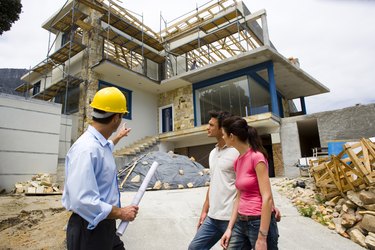Quck answer
Remodeling a split-level home can be a challenging task, but with proper planning and creativity, it can be transformed into a modern and functional space. Here are some key steps to consider:
1. Evaluate the layout: Assess the existing layout and identify areas for improvement. Consider opening up walls to create an open-concept living area or adding additional rooms for more functionality.
2. Enhance the entrance: The entryway is crucial in creating a welcoming first impression. Consider adding a covered porch or updating the front door to enhance curb appeal.
3. Update the kitchen: The kitchen is often the heart of the home. Consider modernizing the space with new cabinets, countertops, and appliances. Opening up the kitchen to the living area can also create a more spacious feel.
4. Upgrade the bathrooms: Update the bathrooms with new fixtures, tiles, and vanities. Consider adding additional storage space and improving the lighting for a more modern and functional bathroom.
5. Create a seamless flow: Ensure a seamless flow between different levels of the home by updating the stairs and railings. Consider adding skylights or large windows to bring in more natural light.
6. Enhance the exterior: Improve the exterior of the home with new siding, windows, and landscaping. Consider adding a deck or patio for outdoor entertaining.
By carefully considering these steps and working with a professional contractor, remodeling a split-level home can result in a beautiful and functional space that meets your needs and preferences.
Split-level homes, also known as divided-entry homes, are a popular architectural style in America. They gained popularity in the 1940s and 1950s when there was high demand for new suburban houses but limited space for construction. Due to their suitability for hilly and narrow lots, split-level homes are often found in subdivisions. These homes are typically small in size and older ones often require updating and renovation. However, the unique layout and exterior of a split-level home can make it challenging to make significant changes during renovation. Nevertheless, with careful planning and flexibility, it is possible to transform your vintage 50s home into a modern and inviting space.
Step 1

Planning the interior design
Image Credit:
Thinkstock/Comstock/Getty Images
The first step is to assess your needs. Determine whether you want to renovate simply to update and maintain the value of your home or if you need to create more space to accommodate a growing family. It is crucial to have a clear purpose in mind as split-level home designs do not allow for mistakes.
Once you have established your needs, set a realistic budget. It is important to be aware of what you can afford and to overestimate costs.
Step 2

Interior Designing
Image Credit:
Jupiterimages/Brand X Pictures/Getty Images
Unleash your creativity by sketching out your desired end result in terms of both floor plan and appearance.
Keep in mind the following considerations:
Split-level home plans were originally inspired by Frank Lloyd Wright’s Arts and Crafts design, which emphasizes simplicity, comfort, and openness. While Wright-designed homes tend to be more expensive, split-level homes were designed to be cost-effective. Like any Wright home, the design aims to blend form, function, and nature, so adding very modern elements may appear out of place.
Split-level homes are intended to have a lower, informal level centered around the husband, a middle, formal level centered around the wife, and an upper level dedicated to bedrooms and private space. While you are not obligated to maintain this pattern during renovation, it can be challenging to make changes that do not align well with this theme.
Due to the uneven placement of windows resulting from the staggered floors, a split-level home with poor landscaping may appear unbalanced and strange. If you need to remove trees during the renovation, it is advisable to replant something in the same location to restore balance to your landscaping.
Step 3

Building a home addition
Image Credit:
Jupiterimages/Pixland/Getty Images
If necessary, construct any additions before making internal changes. Since split-level homes were designed to fit narrow or sloping lots, it is easier to build additions behind the house rather than on either side. This is advantageous as additions to the sides of split-level homes can create an imbalanced and awkward appearance. Additionally, adding stories to the home accentuates the uneven architecture and is not recommended.
The most ideal split-level additions are the ones that transform garages or basements into different functions, as this avoids the need to alter the original outside architecture. It is important to consult with a local builder or realtor when converting a garage or basement, even if you are confident in your own abilities. Garages and basements are not intended to be living spaces, and failure to comply with local regulations regarding window placement and ventilation may result in the resulting rooms being classified only as storage space, which can decrease the value of your home.
Sunrooms and decks added to the back of a split-level house also make excellent additions.
Step 4
[Image: Contempory house, exterior]
The most enjoyable aspect of a split-level remodel is changing the exterior facade. Split-level homes have a simple style that can be easily transformed into various appearances, such as Tudor, Victorian, or ranch. By using different siding styles and stonework, a creative homeowner can turn their plain home into something beautiful.
Look for inspiration in your neighborhood. Take high-quality pictures of the houses you admire in your area, capturing them from multiple angles. Make sure to include the landscaping in the pictures. Print these photos and make notes about what you like and dislike about each house. If you are not knowledgeable about construction, consult with an architect or experienced home renovator to determine what is possible and the estimated cost of your desired renovation.
Ensure that the final result blends well with your neighborhood and landscaping. This will maintain the “curb appeal” of your split-level home, which is the initial impression for potential home buyers.
Step 5
[Image: Modern craftsman interior]
Lastly, remodel the interior. Split-level homes are well-suited for open designs, especially if they have limited square footage, so removing walls is often a good starting point. Aim to create a harmonious flow between the interior and exterior designs. Seek inspiration from Arts and Crafts style decor and keep the design of your home simple and cohesive.
Good remodels incorporate natural materials such as wood floors, tile, stone, and granite, as well as light materials. Since split-level homes often lack sufficient windows for modern preferences, prioritize maximizing natural light in your design. Avoid using eclectic styles, as the split-level design itself is already unique, and an eclectic style can make the limited space feel even smaller.
Instead, research different design styles and remodel your entire home, both inside and out, with one specific style in mind. Keep your space uncluttered, following William Morris’ advice: “Have nothing in your house that you do not know to be useful or believe to be beautiful.” Due to limited space, it is best to avoid wallpaper, as it can make small areas appear busy and cramped.
When undertaking a complete renovation of your home, it is important to pay attention to the foyer. In most home designs, the foyer serves as a clear pathway for guests to reach the guest area or directly leads to the living room or great room. However, split-level homes have two stairways right at the entrance, without indicating the direction for guests. To address this flaw in split-level design, you can open up the foyer to the formal living room, remove or install half-walls, or create clear pathways to the lower den by using the same flooring in both the foyer and downstairs area.
Step 6
Lastly, continuously improve your home by making small updates and getting rid of unnecessary items. Clutter is a common issue in split-level homes. If you have items that are not currently in use, consider storing them in the attic or building a small storage shed in the backyard.

